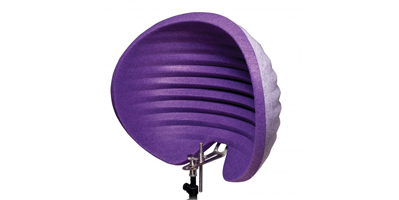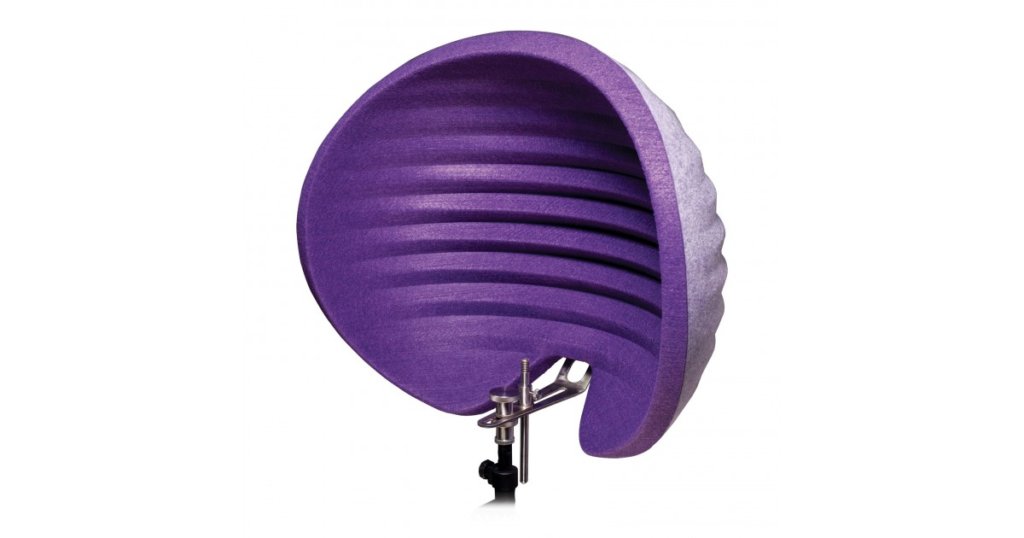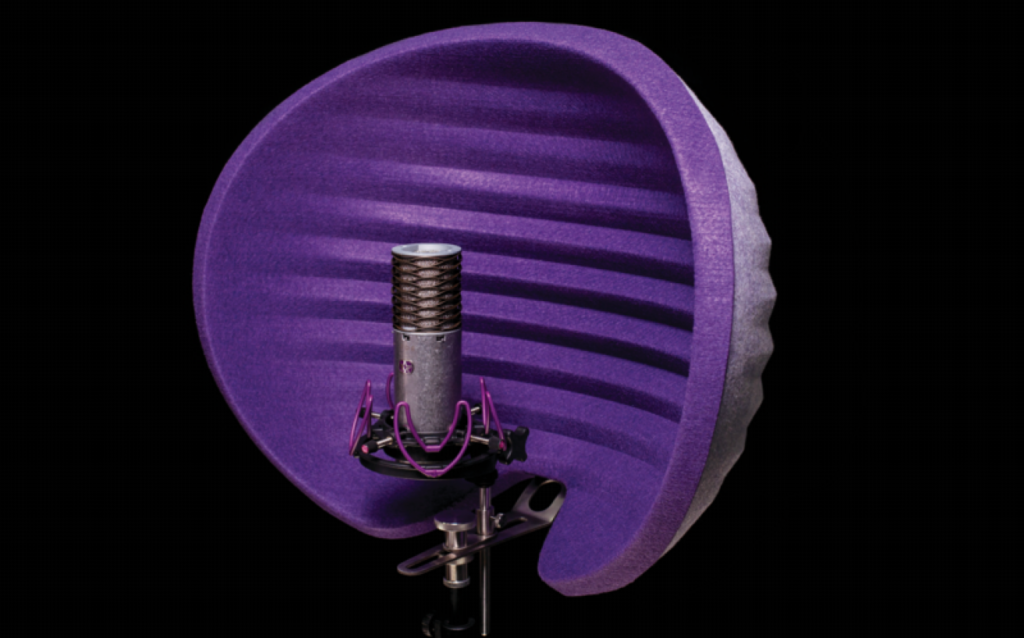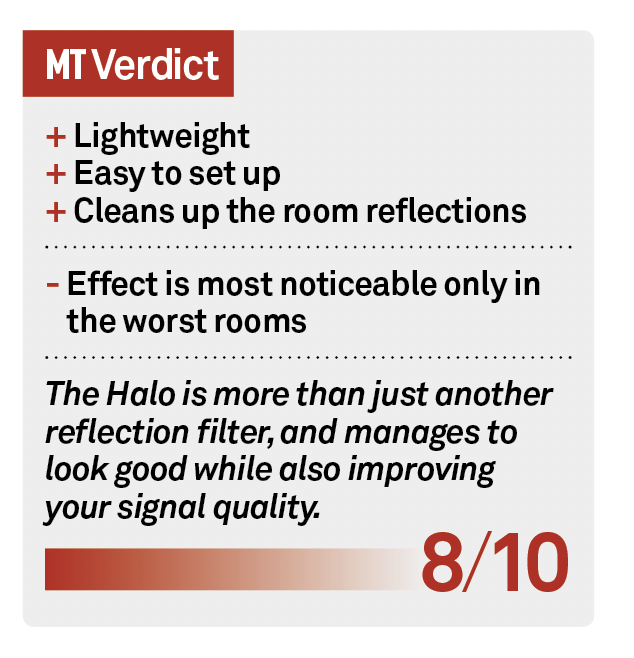Aston Microphones Halo Reflection Filter Review
Accompanying the two microphones in the Aston range is the Halo reflection filter. Can it improve the sound of the Origin and Spirit? Mike Hillier investigates… Details Manufacturer – Aston Microphones Price £199 Contact Sonic Distribution 0845 500 2500 Web www.astonmics.com We’ve been very impressed with both the Origin and Spirit mics from Aston Microphones. These […]

Accompanying the two microphones in the Aston range is the Halo reflection filter. Can it improve the sound of the Origin and Spirit? Mike Hillier investigates…


Details
Manufacturer – Aston Microphones
Price £199
Contact Sonic Distribution 0845 500 2500
Web www.astonmics.com
![]()
We’ve been very impressed with both the Origin and Spirit mics from Aston Microphones. These large-diaphragm condenser mics performed far beyond our expectations, winning blind shootouts against some of our favourite (and most expensive) mics. Now they are joined by the Halo reflection filter.
Halo is made from a patented PET (polyethylene terephthalate) felt: this is a lightweight material, with some very efficient acoustic-absorption properties. The material is also eco-friendly, being made from 70-per-cent recycled PET plastic bottles.
Unlike most other reflection filters, the PET felt shield itself is not simply a ‘U’ shape, absorbing reflections from the back and sides, but instead is a hemisphere, which means it will also be able to absorb reflections coming from the floor or ceiling.
The textured and waveformed surface is designed to help diffuse the direct sound further, so that any reflections that do reach the mic are more diffuse. This should sound more natural, and produce less unwanted comb-filtering.
Halo and Welcome
The Halo is quite large, which helps the unit to absorb the aforementioned reflections from a wide range of angles including above and below. Despite its size it is lightweight enough for one person to affix it to a mic stand without any struggle.
Mounting it to the mic stand is simple, and doesn’t require a degree in mechanical engineering to work out. However, we’d strongly recommend you attach it directly to the stand and not to the boom arm, for better stability, and because affixing the Halo at any angle other than vertical doesn’t make sense.
The microphone itself mounts on the metal hardware, and for our first experiments with the Halo, we mounted an Aston Origin directly to the hardware with no shock-mount.
In our studio control room, the effect of using the Halo is not overwhelming.
The control room is already a fairly dry space, and if anything, adding the Halo left the vocal sound a little choked. Moving into the live room, however, the difference between recording with and without the Halo was quite noticeable. The room tone was brought down drastically, leaving the vocal sounding clean, clear and dry. With headphones on, it was as though the vocalist was singing right into our ears.
Dry recordings don’t usually sound that great on their own, but the big advantage is how well they receive effects afterwards. Comparing the vocal –recorded with and without the Halo with both EQ’d, compressed and with a Lexicon Hall reverb applied – brings out what it is that makes the Halo so worthwhile.

Without the Halo, the room tone is being passed through the reverb, smearing the reverb tail, and bringing up a muddiness in the low-midrange.
The reverb tail from the Lexicon of the recording with the Halo sounded cleaner, and more focused, placing the vocalist more accurately within the artificial space. The result was we didn’t feel we’d need to EQ the reverb send and return as heavily to fit into the mix
Next up, we tried using the Halo on a guitar cab. We usually try and lift guitar cabs off the floor on a small stool or similar, as this helps to prevent comb filtering in the bottom end from reflections coming off the floor.
With the Halo, raising the cabinet off the floor also meant switching to a small, kick-drum mic stand worked perfectly for getting the height right. Positioning the Halo for use next to an amp on the floor would presumably require a boom arm pointed vertically at the floor and some fiddling to get the mic angled at the speaker, but should still be possible.
Again, we used the Aston Origin on the cabinet with the Halo. The Halo is quite large, but we were able to get an SM57 inside the hemisphere on a second stand to pair with the Origin. However, we weren’t able to get the SM57 capsule to quite line up with the one in the Origin without the back of the SM57 and the mic cable hitting the back of the Halo. This isn’t so bad, though, as we can sample-align the signals in our DAW.
The results of the guitar recordings were great. The Halo reflection filter helped to isolate the mildly overdriven signal coming from the amplifier from the sound saturating the room.
The guitar seemed more mid-forward, and more aggressive, with the pick attack seeming to provide more of a dynamic than without the Halo in place. The differences, though, were subtle – much more so than the vocal recording.
Halo is undoubtedly a useful tool, and one that will help bedroom producers reach a new level of quality in their recordings, cleaning up the often significantly-less-than-perfect room reflections from the signal. In a more professional room, however, it might have less appeal as there is less to clear up.
Having said that, the Halo reflection filter does ofter the pro-studio owner some flexibility, and it’s much easier to set up and far more convenient than building a temporary vocal booth.
Halo Reflection Filter – Alternatives
The SE Reflexion Filter was the first dedicated portable vocal booth we came across, and it did an excellent job at cleaning up the room tone, but was quite weighty and not always that easy to affix to the stand. The Halo has tech specs that out-perform the alternatives, but it is much simpler to set up and use.
If you regularly track vocals in small untreated rooms, this type of device should be high on your wishlist.

Halo Reflection Filter – Key Features
● Hemispherical design
● 360-degree filtering
● Proprietary easy-mount hardware
● Cable-tidy built-in design
● 53 x 45cm ridge-textured surface are


